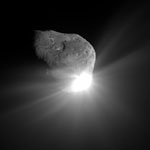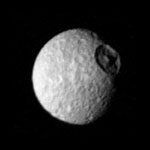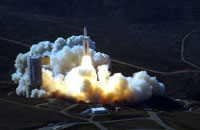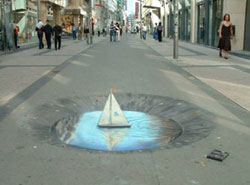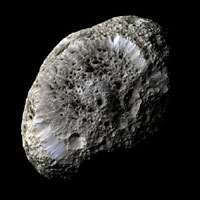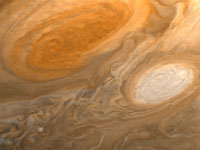On October 19th, 1899, 17-year old Robert Goddard climbed a tree in Worchester, Massachusetts, and inventented modern space flight. He dreamt of a machine that could carry men to Mars. From that young age onward, he dedicated his life to building such a machine. By 1926, he had designed, built, and flown the world's first liquid-fueled rocket.
In this picture, Mars is visible in the lower-right hand corner (through the trees), and Venus is just above and to the left of the Moon.

